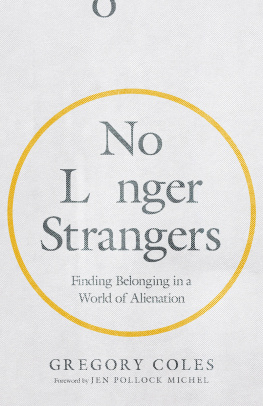Copyright 2017 Houghton Mifflin Harcourt Publishing Company
All rights reserved
www.hmhco.com
cliffsnotes.com
No part of this work may be reproduced or transmitted in any form or by any means, electronic or mechanical, including photocopying and recording, or by any information storage or retrieval system without the prior written permission of Houghton Mifflin Harcourt Publishing Company unless such copying is expressly permitted by federal copyright law. For information about permission to reproduce selections from this book, write to or to Permissions, Houghton Mifflin Harcourt Publishing Company, 3 Park Avenue, 19th Floor, New York, New York 10016.
The publisher and the author make no representations or warranties with respect to the accuracy or completeness of the contents of this work and specifically disclaim all warranties, including without limitation warranties of fitness for a particular purpose. No warranty may be created or extended by sales or promotional materials. The advice and strategies contained herein may not be suitable for every situation. This work is sold with the understanding that the publisher is not engaged in rendering legal, accounting, or other professional services. If professional assistance is required, the services of a competent professional person should be sought. Neither the publisher nor the author shall be liable for damages arising here from. The fact that an organization or Website is referred to in this work as a citation and/or a potential source of further information does not mean that the author or the publisher endorses the information the organization or Website may provide or recommendations it may make. Further, readers should be aware that Internet Websites listed in this work may have changed or disappeared between when this work was written and when it is read.
Trademarks: CliffsNotes, the CliffsNotes logo, Cliffs, cliffsnotes.com, and all related trademarks, logos, and trade dress are trademarks or registered trademarks of Houghton Mifflin Harcourt Publishing Company. All other trademarks are the property of their respective owners. Houghton is not associated with any product or vendor mentioned in this book.
Library of Congress Cataloging-in-Publication data is available.
eISBN 978-0-544-98065-5
v1.0217
At-a-Glance
Kristin Hannahs The Nightingale tells the story of Vianne (Rossignol) Mauriac and Isabelle Rossignol, two French sisters who resist the occupying Nazi forces during World War II (WWII) by hiding Jewish children so they are not taken to concentration camps (the Holocaust) and by leading the escape of Allied pilots whose planes have been shot down over France.
Since their mother died when they were children, Vianne and Isabelle have always been at odds. Vianne, the older sister, is a rule-follower, whereas Isabelle is rebellious and speaks her mind. The Nazi invasion of France heightens these differences. Vianne continues to follow the rules even when it means allowing a Nazi officer to live in her home and the abuse and arrest of her Jewish neighbors. Isabelle, who refuses to live passively under German authority, joins the French resistance movement and begins guiding Allied airmen out of France after their planes are shot down. For her work, she adopts the codename the Nightingale.
When the Holocaust puts Viannes Jewish best friends son at risk, she adopts the boy and begins forging false identity papers for other Jewish children so they can be hidden in the local Catholic orphanage. Isabelle is captured by the Nazis and interrogated. Claiming to be the Nightingale, her estranged father, Julien, rescues her but is executed in her place. Isabelle spends the remainder of the war in a Nazi prison camp, and she dies shortly after being freed. Years later, an elderly Vianne remembers these experiences and attends an event in her sisters honor.
Written by: Kristin Hannah
Type of Work: Fiction
Genre: WWII narrative
First Published: 2015
Setting (primary): Carriveau, France
Settings (secondary): Paris, France; Oregon, USA; various French towns; Spain; Germany
Main Characters: Vianne Mauriac; Isabelle Rossignol; Julien Rossignol; Wolfgang Beck; Sturmbannfhrer Von Richter; Gatan Dubois
Major Thematic Topics: The changing nature of love in wartime; ways of expressing (or failing to express) love; loyalty; gender inequality and cultural expectations; complicity with evil; the humanity of enemies; what makes a life worth living
Major Symbols: Cold and heat; books; cancer; pregnancy and infertility; names and the power of naming
The three most important aspects of The Nightingale: One important aspect of The Nightingale is its exploration of gender and the societal expectations of women. Many of Isabelles character traitsher boldness, her willingness to fight, and her refusal to tolerate what she believes is wrongare traits often celebrated in men. However, because she is a woman, society considers her rebellious, hard to deal with, and incapable of fighting in the war. Gatan, whom Isabelle meets in the woods as she flees Paris, is one of the first people to see her as more than a girl, as capable of things that society does not expect from women. Not only does Isabelle prove society wrong, but she also uses her gender to her advantage. Because the Nazis do not expect resistance fighters to be women, Isabelle is able to do things that may have gotten her caught and killed if she were a man. When she is finally caught for her work as the Nightingale, the Nazis are convinced that a woman could not be the Nightingale, a belief that saves her life. In addition to its advantages, however, being a woman incurs specific risks, as Viannes repeated brutal rape at the hands of Sturmbannfhrer Von Richter demonstrates all too clearly.
A second important theme the novel introduces is how love changes during wartime. Isabelle and Gatan are the clearest example of this change: Although they are deeply drawn to each other, they are reluctant to acknowledge their feelings because the context of the war renders their love both deeper and costlier. Meanwhile, Vianne loves her husband, but his absence and Captain Becks presence in the midst of the intensity of war causes her to experience a type of love that she knows is forbidden. In addition to romantic love, the book portrays many other kinds of love. The family love between Vianne and Isabelle, and between both sisters and their father, shows how war can make it difficult to express love. Finally, Viannes motherly love, both to her biological children and to the Jewish children she saves, raises questions about what parental love really means within the context of war.
Lastly, The Nightingale raises challenging questions about complicity with evil. Vianne wrestles frequently with her tacit collaboration with the Nazi invaders, especially when she provides Beck with a list of Jewish and Communist teachers at her school. Even though she reasons that Beck could have gotten the same information from anyone, Vianne feels a sense of guilt for allowing herself to be a cog in the Nazi war machine. This issue of complicity is one that is especially important in the WWII context because of the Holocaust: Although few people were masterminds behind the slaughter of millions of Jews and other undesirable people, many simply followed orders or stood by and did nothing while the abuse and slaughter took place.
Book Summary
The Nightingale covers five primary periods in the lives of Vianne (Rossignol) Mauriac and Isabelle Rossignol:
1. The Early War
When Viannes husband, Antoine, is conscripted to fight for France against the attacking Germans, Vianne and their daughter, Sophie, try to continue normal life in Carriveau without him, imagining that he will return soon.
Next page














